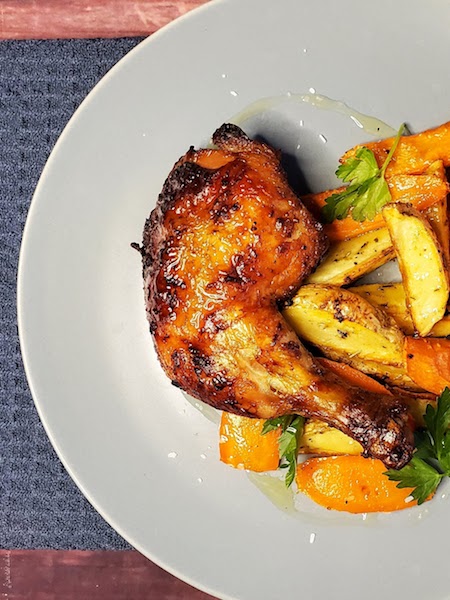What Is Roasting?
Roasting is a dry heat cooking method using an oven or open flame. Heat circulates the food and cooks from all sides. The food undergoes a chemical reaction with exposure to the heat known as the Maillard process, which is what causes the surface of food to brown.
What Is The Difference Between Roasting And Baking?
Roasting and baking are often interchangeable but there was a time when roasting solely referred to large pieces of meat, which were usually cooked over an open flame. Everything cooked in the oven was considered baked. As cooking equipment advanced over time so did the term of roasting. Roasting and baking are almost identical but through the evolution of culinary studies the following differences have been noted.
When you think of things that are roasted, you instantly think of brown, crisp exterior with abundant moisture inside like a roasted chicken or crispy potato wedges. Roasting foods require temperatures of 400°F to get that nice browning as the food caramelizes during the cooking time. The exception to this is large cuts of meat (roasts) that should be cooked at low temperatures between 300°F-350°F for multiple hours. The length of time cooking allows for a beautiful browning or, in some cases, the meat is seared first.
Now, when baking up a batch of cookies, we’ve all come across the batch with the bottoms a little too brown and remember the undesirable bitter taste it leaves in your mouth. The aim in baking is a golden color, not brown and baking uses lower heat temperatures to achieve this outcome.
Another difference pointed out is the difference in foods’ physical state. When you roast a chicken, the whole chicken goes in and the whole chicken comes out, as it was but edible. Therefore, roasting applies to food items that maintain their structural state while cooking. This can be meats, poultry, vegetables, etc.
Baked goods are different in the way they physically change in structure while cooking. This can be items such as breads, pizza, cakes, cookies and pastries, which initially start off as a dough or batter.
What Are The Benefits of Roasting?
Roasting is one of the healthiest cooking methods so keep this in mind when meal planning. It requires minimal fat to initiate the browning process. That means less calories added. Food, especially vegetables, retain more nutrients than other cooking methods.
The food caramelizes when the natural sugars are extracted by the heat and turn a brown color. This creates a notably deeper flavour profile of foods in comparison to when they are steamed, poached, stir-fried, etc.
How Do You Roast Properly?
Ideally, roasting food anticipates a crisp outer texture from the browning process while maintaining a delicious juicy interior.
Vegetables contain a large amount of water and natural sugars. They also cook much quicker than meats. Cook at a temperature of at least 400°F and above for a delicious caramelized exterior.

“natural sugars are extracted by the heat and turn a brown color”
Retaining the moisture is important in roasting. Adding fats such as oils and butters will help any food retain moisture.
There are also a variety of cooking methods used to retain moisture.
- Some foods are covered to keep in moisture then uncovered during the last little bit to get that desired browning.
- Meats that require longer cooking times are cooked at low temperatures (300°F – 350°F) and are basted periodically with the natural juices collecting at the bottom of the pan. Use a baster to easily collect the liquid and pour back over the protein.
- When meat is removed from the heat it is critical to allow time for the meat to rest and have the juice settle inside. Cutting it too early will cause all the juices to spill out onto the cutting board leaving you with dry meat.
- Whole fish is baked while buried in coarse salt, (the packed on salt acts as a barrier between the heat and the fish).
- Bone-in cuts of meat and fish are widely used in roasting for their ability to maintain moisture.
- Proteins should begin at room temperature before roasting so that they can get an even cooking all around without having the outer area dry out before the middle is cooked.
- Food is cut to even sizes for the simple result of even cooking. Different sizes require different cooking times.
What Equipment Is Used For Roasting?
Another key part of proper roasting is your tools and equipment.
First and most important; the oven should be preheated before the food goes in. This gets the food cooking right away and properly.
Some ovens, especially older models, should be calibrated from time to time to make sure the desired temperature is actually what you’re getting.
Consider the following kitchen tools for correct roasting technique:







